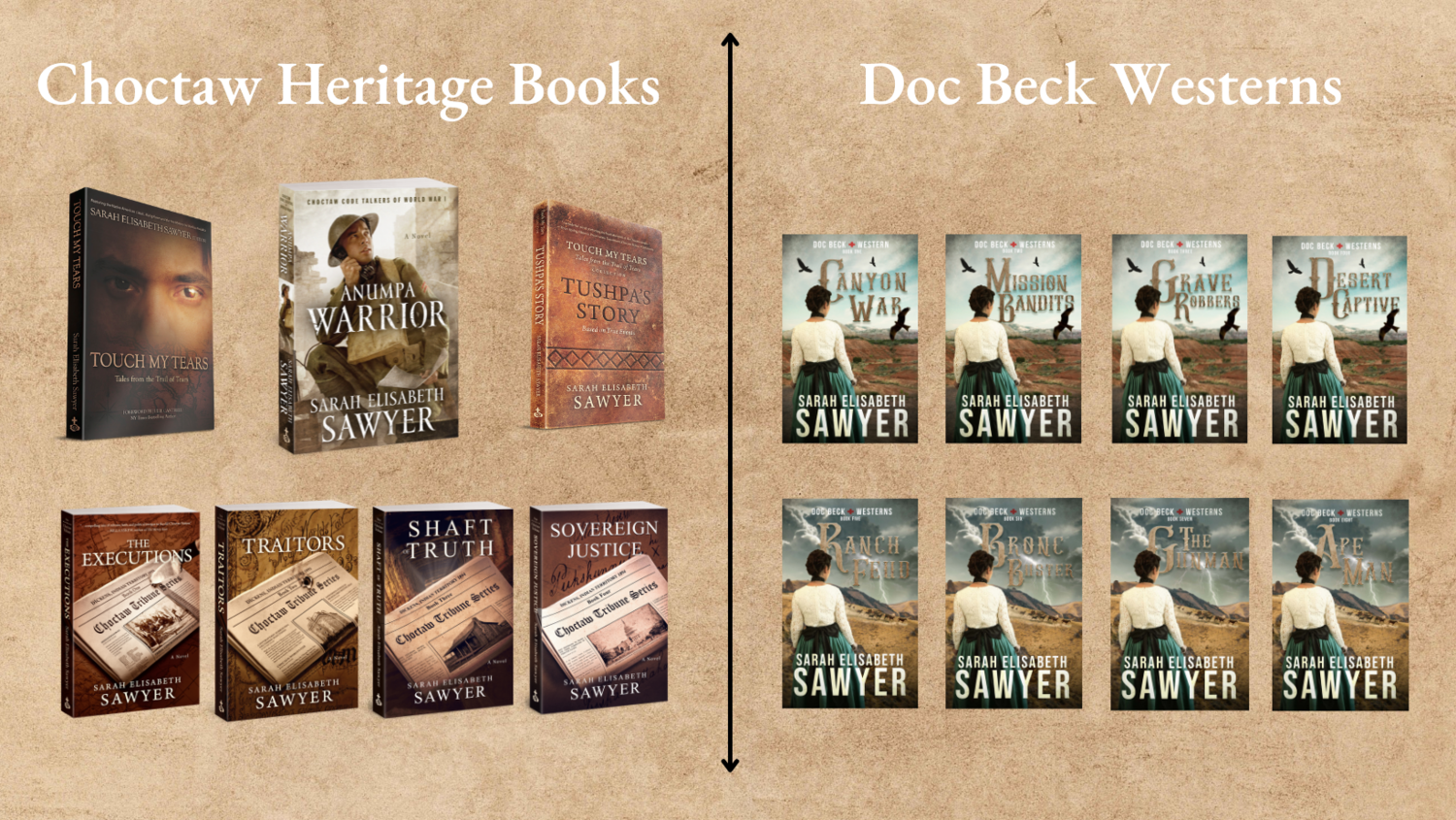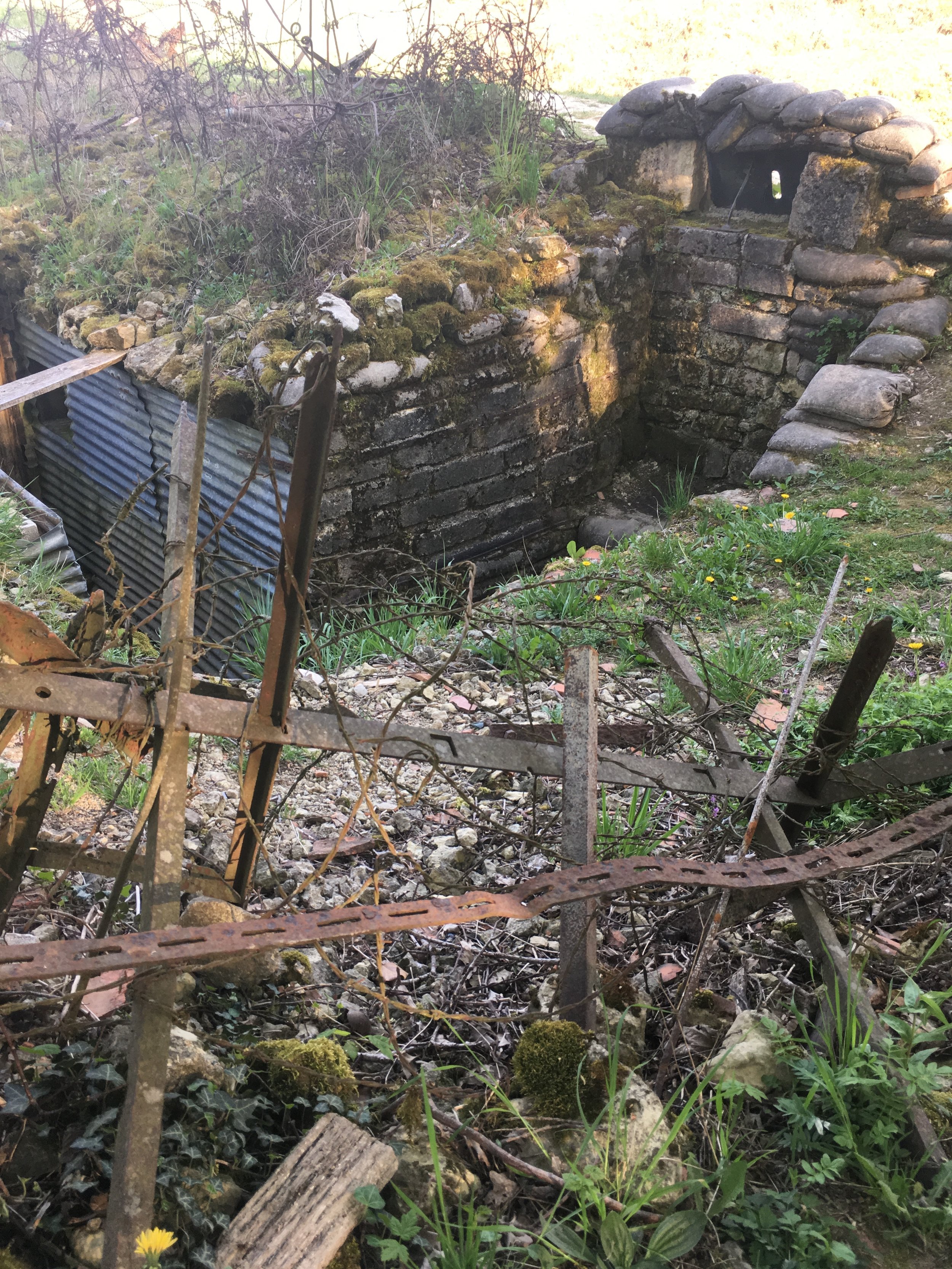France Research Trip for the Choctaw Code Talkers of World War I Novel - Part 4
After spending most of the morning and through lunch with Jean-Paul and his expertise, it was time to meet up with Roger at his home in a tiny, rural community. Roger’s cats, dogs, and his 1883 farmhouse welcomed us like old friends. (According to Roger: “It is possible that in September 1918 the roof was hit by a shell fired by the gun battery commanded by a certain Captain Truman, who later went on to become president of the USA.”)
Roger took a few minutes to show us guns from his collection. I took one revolver in hand, feeling its weight and thinking about six-shooters in the old west as Roger talked about modern-day gun laws in France.
The coolest thing about this revolver were the words “St. Etienne.”
When I took the pistol, he commented on how I knew how to handle guns. He said the first thing most people did was look down the barrel! Absolutely not. I was in 4-H Shooting Sports for a decade. Always assume a gun is loaded and keep it pointed in a safe direction.
After that, we were off in Roger’s cabriolet. I can’t express how amazing it felt to ride in the back of the convertible, spring sunshine balancing the temperature with the mild road wind. Incredible whether one were viewing France for the first or thousandth time.
Roger drove us to a monument not far from his home, though he admitted he hadn’t even known it was there until one evening when it was lit up in the distance, and he asked his neighbors what it was.
We arrived and parked at the Montfaucon American Monument, a massive granite Doric column. We tucked our belongings in the car’s boot before exploring the area—concrete German bunkers scattered around; 6th-century ruins of Saint-Germain Abbey.
Roger explained how what had remained of the abbey was gradually destroyed by the Germans, French, and finally, the Americans, during intense battle. Ancient history clashing with 20th-century warfare.
Montfaucon American Monument
We mounted the wide stairs to the base of the monument. I snapped pictures of familiar American divisions before we went inside, still undecided if we’d climb to the top. I was determined to take on the full experience. But then I made the mistake of looking up the tightly spiraling staircase. The swirls and height were dizzying.
No way. Not a chance.
What came out of my mouth was, “Sure.”
Up we went.
Thankfully, there was a landing and benches for the climb. Those came in handy on the way down.
I didn’t dare look down as I had looked up.
At last, we reached the 234th stair and the top of the Montfaucon American Monument. My legs threatened to give out in fear as I clenched the railing around the circular interior platform. (Have I mentioned I’m terrified of heights?)
Roger explained that each of the doors at the top led out to a little balcony. I could brave that since the balconies were tightly enclosed with stone two feet wide.
It was worth it. The views were magnificent; miles and miles of countryside. Roger pointed out potential trench patterns still visible in the fields of crops, and the monastery ruins from far above.
I snapped pictures, did video, and dreaded the descent. But I was glad I’d agreed to make the climb.
Back in the cabriolet, we headed for Varennes-en-Argonne. Along the way, we sighted a monument to Missouri doughboys (Missouri First World War Monument at Cheppy) and a gypsy-looking trailer. Roger said that his mailbox had been marked for his house as a potential target by gypsies just a few days before.
The village of Varennes-en-Argonne was everything you’d think of in a French village so unchanged by hundreds of years. Even places rebuilt after the destructive power of WWI closely resembled their predecessors. A building only a hundred years old (only!) was basically a replica of the ancient one before it.
Roger shared the story of how in 1791 pigs’ feet were the death of King Louis XVI and his wife Marie Antoinette when the royal family stopped in Varennes-en-Argonne for the famous delicacy. A clock tower in the distance marked the memory with how quickly time can run out.
Our time was running out that day, but there was time for the monument in Varennes-en-Argonne: The Pennsylvania Memorial. As the sun cast shadows of constant change, I walked the enormous platform, trying to take in its significance—the markings, the inscriptions, the stories and jokes Roger told of someone who threatened someone else that if they didn’t do their job and get the monument cleaned and polished, they’d have it blasted and removed. It was sparkling when we visited.
A gospel music group had held a singing there the previous summer. It seemed the ideal spot, with the platform facing a grassy lawn with ample space.
With the extended spring sunset, off we went for another sight: Butte de Vauquois.
That hilltop battlefield is somewhat intact with narrow gauge railroad tracks and tunnels. It was an arduous climb up the side of a mini mountain for the heavily-loaded cabriolet, but we made it to the visitor parking area. And…at more stairs. Only these were merely dirt boxed-in by wood.
We made it to the top of the mines for the view Roger wanted us to see, something I’d read about but hadn’t added to the itinerary because I had no idea if we’d be in the vicinity. But there they were, craters and craters where tons of explosives during mine warfare had blown the hilltop off, leaving lake-sized depressions. It looked like a grass-covered moon.
We went down into the craters and back up to discover one of the most sensory-ladened experiences of the trip. Some original and some replica, there lay a section of German trenches.
Down into them we went. The first part, head high, was the original, unrestored section, corroded from dirt sliding in and weeds.
Then it turned into another world.
Lined with sandbags (concrete for posterity), wood timbers, and corrugated metal, I was walking through a trench like the soldiers lived in with constant shelling and unbelievable sanitary (and sanity) conditions. Higher than my head, I would need a ladder as they did to climb “over the top.” There was a sniper’s nest I would have climbed into, but the setup looked sketchy.
On we went through the trench until we reached what became my favorite part, where we had to bend and scoot down through a narrow tunnel-like section. Climbing out of it ahead of me, Tiajuana got my picture, me all squatted down and jaw-dropped like I was the whole trip at the fantastic opportunity to see, breathe, and touch history.
We ended exploration near a bench overlooking one of the largest craters. We stood atop rumored caches of explosives still underground, enough to blow away the rest of the hill and us along with it. Roger told us that some expert had said as long as the explosives were in water underground, everything was fine.
Sure.
But the sun warned us it would set whether we were ready to leave or not.
At Roger’s house, we set a time to meet the next morning and said a quick goodbye. Tiajuana and I didn’t want to drive on the unfamiliar country roads back to our hotel in the dark.
But tomorrow. Tomorrow held the reason I’d come to France.











